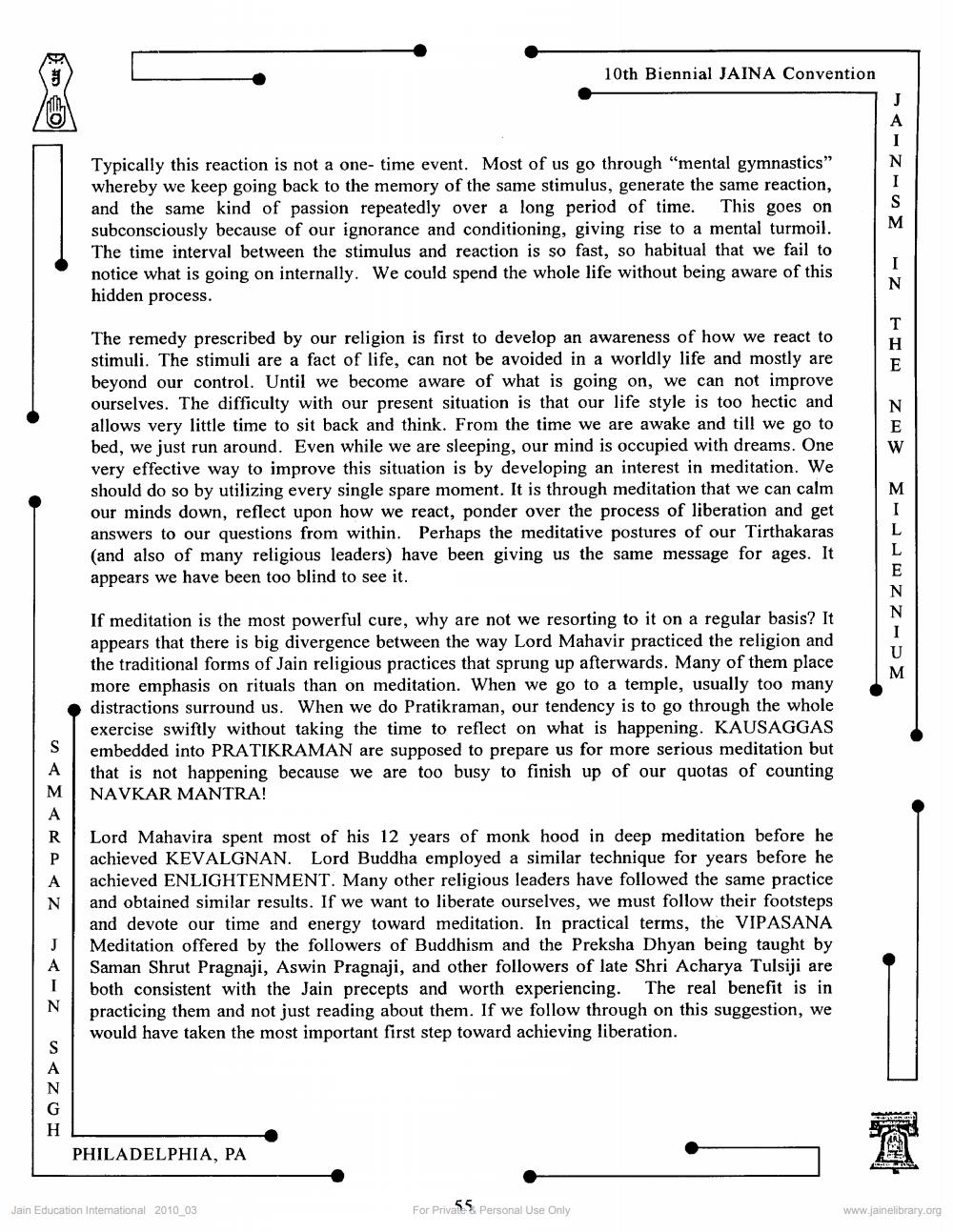________________
10th Biennial JAINA Convention
Typically this reaction is not a one-time event. Most of us go through "mental gymnastics" whereby we keep going back to the memory of the same stimulus, generate the same reaction, and the same kind of passion repeatedly over a long period of time. This goes on subconsciously because of our ignorance and conditioning, giving rise to a mental turmoil. The time interval between the stimulus and reaction is so fast, so habitual that we fail to notice what is going on internally. We could spend the whole life without being aware of this hidden process.
The remedy prescribed by our religion is first to develop an awareness of how we react to stimuli. The stimuli are a fact of life, can not be avoided in a worldly life and mostly are beyond our control. Until we become aware of what is going on, we can not improve ourselves. The difficulty with our present situation is that our life style is too hectic and allows very little time to sit back and think. From the time we are awake and till we go to bed, we just run around. Even while we are sleeping, our mind is occupied with dreams. One very effective way to improve this situation is by developing an interest in meditation. We should do so by utilizing every single spare moment. It is through meditation that we can calm our minds down, reflect upon how we react, ponder over the process of liberation and get answers to our questions from within. Perhaps the meditative postures of our Tirthakaras (and also of many religious leaders) have been giving us the same message for ages. It appears we have been too blind to see it.
If meditation is the most powerful cure, why are not we resorting to it on a regular basis? It appears that there is big divergence between the way Lord Mahavir practiced the religion and the traditional forms of Jain religious practices that sprung up afterwards. Many of them place more emphasis on rituals than on meditation. When we go to a temple, usually too many distractions surround us. When we do Pratikraman, our tendency is to go through the whole exercise swiftly without taking the time to reflect on what is happening. KAUSAGGAS embedded into PRATIKRAMAN are supposed to prepare us for more serious meditation but that is not happening because we are too busy to finish up of our quotas of counting NAVKAR MANTRA!
Lord Mahavira spent most of his 12 years of monk hood in deep meditation before he achieved KEVALGNAN. Lord Buddha employed a similar technique for years before he achieved ENLIGHTENMENT. Many other religious leaders have followed the same practice and obtained similar results. If we want to liberate ourselves, we must follow their footsteps and devote our time and energy toward meditation. In practical terms, the VIPASANA Meditation offered by the followers of Buddhism and the Preksha Dhyan being taught by Saman Shrut Pragnaji, Aswin Pragnaji, and other followers of late Shri Acharya Tulsiji are both consistent with the Jain precepts and worth experiencing. The real benefit is in practicing them and not just reading about them. If we follow through on this suggestion, we would have taken the most important first step toward achieving liberation.
PHILADELPHIA, PA
Jain Education International 2010_03
For Private
Personal Use Only
www.jainelibrary.org




